Shamiul Alam
A Review on Digital Pixel Sensors
Feb 07, 2024Abstract:Digital pixel sensor (DPS) has evolved as a pivotal component in modern imaging systems and has the potential to revolutionize various fields such as medical imaging, astronomy, surveillance, IoT devices, etc. Compared to analog pixel sensors, the DPS offers high speed and good image quality. However, the introduced intrinsic complexity within each pixel, primarily attributed to the accommodation of the ADC circuit, engenders a substantial increase in the pixel pitch. Unfortunately, such a pronounced escalation in pixel pitch drastically undermines the feasibility of achieving high-density integration, which is an obstacle that significantly narrows down the field of potential applications. Nonetheless, designing compact conversion circuits along with strategic integration of 3D architectural paradigms can be a potential remedy to the prevailing situation. This review article presents a comprehensive overview of the vast area of DPS technology. The operating principles, advantages, and challenges of different types of DPS circuits have been analyzed. We categorize the schemes into several categories based on ADC operation. A comparative study based on different performance metrics has also been showcased for a well-rounded understanding.
Machine Learning-powered Compact Modeling of Stochastic Electronic Devices using Mixture Density Networks
Nov 10, 2023Abstract:The relentless pursuit of miniaturization and performance enhancement in electronic devices has led to a fundamental challenge in the field of circuit design and simulation: how to accurately account for the inherent stochastic nature of certain devices. While conventional deterministic models have served as indispensable tools for circuit designers, they fall short when it comes to capture the subtle yet critical variability exhibited by many electronic components. In this paper, we present an innovative approach that transcends the limitations of traditional modeling techniques by harnessing the power of machine learning, specifically Mixture Density Networks (MDNs), to faithfully represent and simulate the stochastic behavior of electronic devices. We demonstrate our approach to model heater cryotrons, where the model is able to capture the stochastic switching dynamics observed in the experiment. Our model shows 0.82% mean absolute error for switching probability. This paper marks a significant step forward in the quest for accurate and versatile compact models, poised to drive innovation in the realm of electronic circuits.
A Deep Dive into the Design Space of a Dynamically Reconfigurable Cryogenic Spiking Neuron
Aug 30, 2023Abstract:Spiking neural network offers the most bio-realistic approach to mimic the parallelism and compactness of the human brain. A spiking neuron is the central component of an SNN which generates information-encoded spikes. We present a comprehensive design space analysis of the superconducting memristor (SM)-based electrically reconfigurable cryogenic neuron. A superconducting nanowire (SNW) connected in parallel with an SM function as a dual-frequency oscillator and two of these oscillators can be coupled to design a dynamically tunable spiking neuron. The same neuron topology was previously proposed where a fixed resistance was used in parallel with the SNW. Replacing the fixed resistance with the SM provides an additional tuning knob with four distinct combinations of SM resistances, which improves the reconfigurability by up to ~70%. Utilizing an external bias current (Ibias), the spike frequency can be modulated up to ~3.5 times. Two distinct spike amplitudes (~1V and ~1.8 V) are also achieved. Here, we perform a systematic sensitivity analysis and show that the reconfigurability can be further tuned by choosing a higher input current strength. By performing a 500-point Monte Carlo variation analysis, we find that the spike amplitude is more variation robust than spike frequency and the variation robustness can be further improved by choosing a higher Ibias. Our study provides valuable insights for further exploration of materials and circuit level modification of the neuron that will be useful for system-level incorporation of the neuron circuit
Reimagining Sense Amplifiers: Harnessing Phase Transition Materials for Current and Voltage Sensing
Aug 30, 2023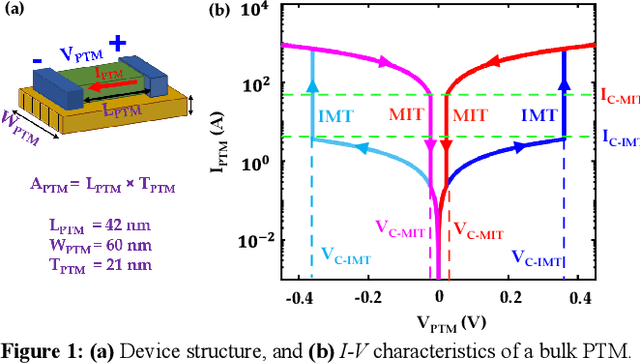
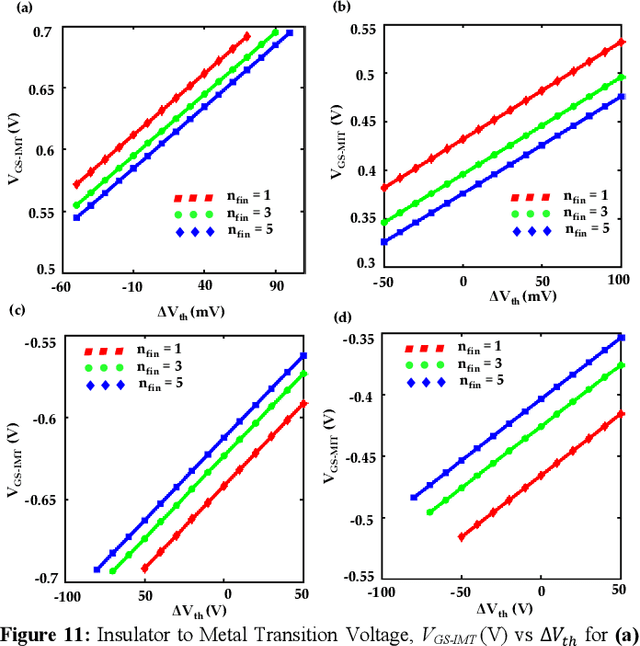
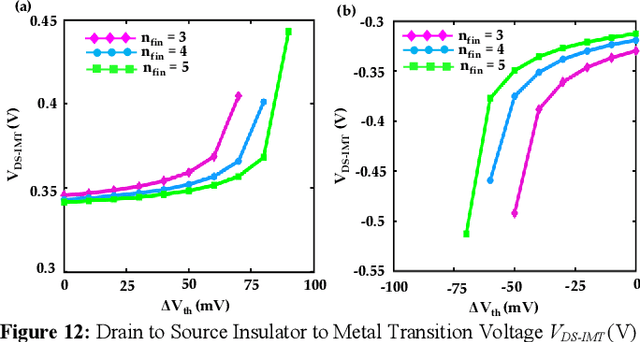
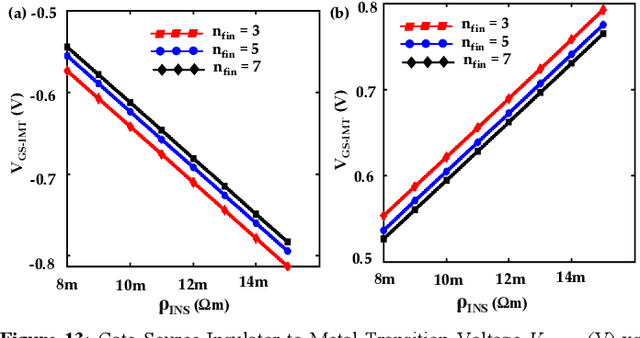
Abstract:Energy-efficient sense amplifier (SA) circuits are essential for reliable detection of stored memory states in emerging memory systems. In this work, we present four novel sense amplifier (SA) topologies based on phase transition material (PTM) tailored for non-volatile memory applications. We utilize the abrupt switching and volatile hysteretic characteristics of PTMs which enables efficient and fast sensing operation in our proposed SA topologies. We provide comprehensive details of their functionality and assess how process variations impact their performance metrics. Our proposed sense amplifier topologies manifest notable performance enhancement. We achieve a ~67% reduction in sensing delay and a ~80% decrease in sensing power for current sensing. For voltage sensing, we achieve a ~75% reduction in sensing delay and a ~33% decrease in sensing power. Moreover, the proposed SA topologies exhibit improved variation robustness compared to conventional SAs. We also scrutinize the dependence of transistor mirroring window and PTM transition voltages on several device parameters to determine the optimum operating conditions and stance of tunability for each of the proposed SA topologies.
Cryogenic Neuromorphic Hardware
Mar 25, 2022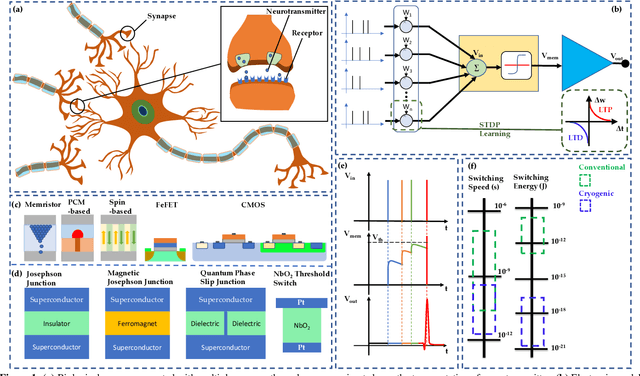
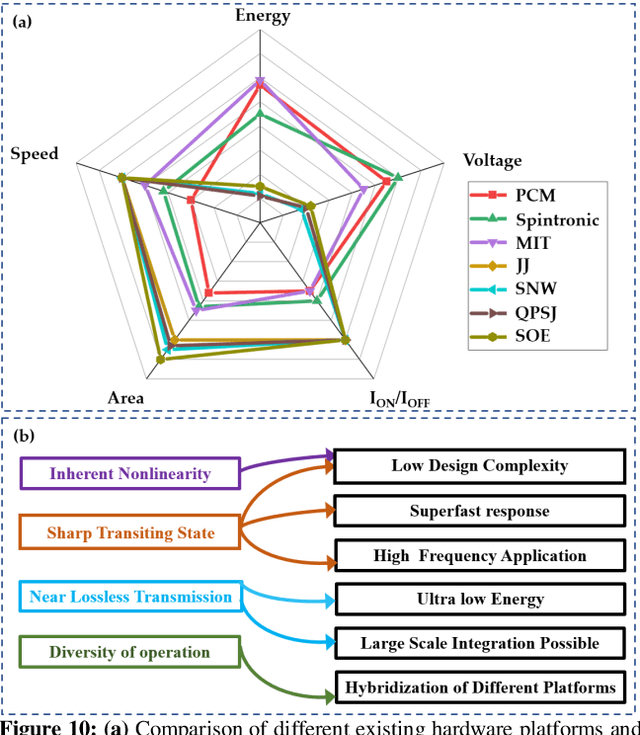
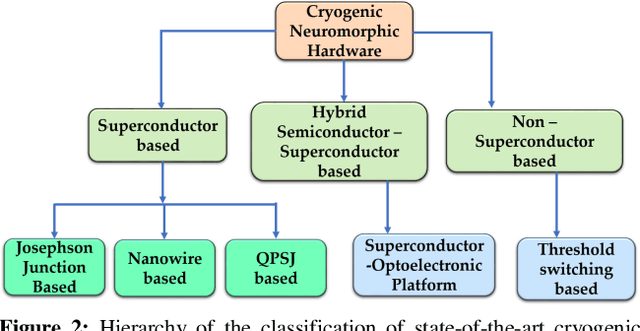
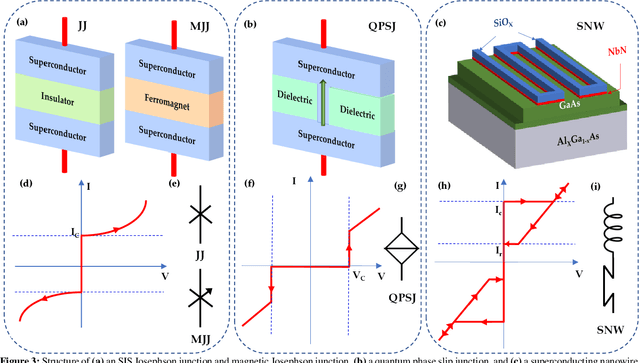
Abstract:The revolution in artificial intelligence (AI) brings up an enormous storage and data processing requirement. Large power consumption and hardware overhead have become the main challenges for building next-generation AI hardware. Therefore, it is imperative to look for a new architecture capable of circumventing these bottlenecks of conventional von Neumann architecture. Since the human brain is the most compact and energy-efficient intelligent device known, it was intuitive to attempt to build an architecture that could mimic our brain, and so the chase for neuromorphic computing began. While relentless research has been underway for years to minimize the power consumption in neuromorphic hardware, we are still a long way off from reaching the energy efficiency of the human brain. Besides, design complexity, process variation, etc. hinder the large-scale implementation of current neuromorphic platforms. Recently, the concept of implementing neuromorphic computing systems in cryogenic temperature has garnered immense attention. Several cryogenic devices can be engineered to work as neuromorphic primitives with ultra-low demand for power. Cryogenic electronics has therefore become a promising exploratory platform for an energy-efficient and bio-realistic neuromorphic system. Here we provide a comprehensive overview of the reported cryogenic neuromorphic hardware. We carefully classify the existing cryogenic neuromorphic hardware into different categories and draw a comparative analysis based on several performance metrics. Finally, we explore the future research prospects to circumvent the challenges associated with the current technologies.
 Add to Chrome
Add to Chrome Add to Firefox
Add to Firefox Add to Edge
Add to Edge